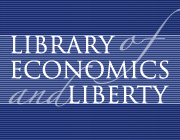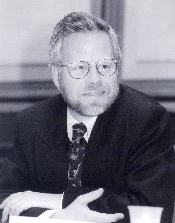
PerestroikaAbout the Author |

To the outside world, the Soviet Union seemed little different in 1984 from what it had been for at least a decade. Except for a few skeptics, almost everyone agreed that the Soviet Union was the world's second-largest economy and, if not the most powerful military force in the world, then a very close second. It produced more machine tools, steel, oil, and natural gas than any other country, and its stock of nuclear and conventional weapons in Europe was at least double that of the United States.
Yet deep within the system, some had begun to question the reality of that apparent strength. In early 1983, for example, Tat'iana Zaslavskaia, a social scientist at the Siberian division of the Soviet Academy of Sciences, wrote a long study detailing the Soviet economy's shortcomings and its growing inability to compete in an age of high technology. As Zaslavskaia saw it, the central planning system had outlived its usefulness. According to her, central planning served reasonably well to acculturate illiterate peasants into an industrial, urban work force. But as the Soviet economy became more extensive and complex, the central planners could not maintain control over it. The control they did manage to exercise often served to stifle as much as it facilitated. Ludwig von Mises and Friedrich Hayek had pointed this out years earlier. People, they said, need a market to guide the millions of decisions that must be made each day about how, what, when, and for whom to produce. Without the market a planning commission like Gosplan, no matter how large, will find itself unable to react effectively.
Indeed, one of Zaslavskaia's criticisms was that the system was becoming more and more counterproductive. Increasingly, the Soviet industrial system was producing negative value added: the value of the inputs and components used in many production processes was worth more than the resulting final product. Thus, because of the wasteful use of metals in producing drilling equipment and pipelines, the expense of drilling and transporting petroleum often exceeded the value of the oil at its final destination. The slow growth rate that resulted from the inefficiencies made it impossible to provide a better life for the work force, which the government had promised would follow once an industrial foundation had been built.
By late 1984 Mikhail Gorbachev had joined the ranks of those who believed that the Soviet Union's economic system could not continue without far-reaching reforms. He was not to become the general secretary of the Communist Party of the Soviet Union until March 1985. He had, however, called in Zaslavskaia a few years earlier for a discussion about agricultural reform, and their discussion expanded to include an analysis of the overall economic system.
Gorbachev has described how, by December 1984, he had concluded "that it was impossible to live that way." This meant a change not only in the country's political and social life, but also in its economy. That same month, while speaking at a meeting of party officials, Gorbachev presented his version of what needed to be done. Although Konstantin Chernenko would be the nominal leader of the party for another three months, Gorbachev chose this speech to issue a call for "perestroika"—for restructuring.
Although the exact meaning of Gorbachev's perestroika changed from year to year, in those early months he spoke of intensifying and accelerating production in the machine tool industry. Once elected general secretary, his concept of perestroika also came to include removing some decision making from the ministries and Gosplan, the state planning commission. This implied more reliance on market processes; at least there was a marked softening of the harsh rhetoric used to describe the market. But other than an experiment or two, he proposed no concrete measures to advance the use of markets. In fact, it sometimes looked as if the opposite was happening.
While Gorbachev closed down a large number of economic ministries, for example, he created superministries in their place. Thus, the resulting agricultural ministry (Gosagroprom) was even more dominant in determining agricultural production and ultimately became an obstacle to agricultural reform. Even more striking, in July 1986 the Soviet Union started a crackdown on all private trade. No individuals could sell anything that they themselves did not produce. This was a step back to the early thirties.
In 1987 Gorbachev concluded that he was headed in the wrong direction. In May of that year a new regulation authorized private and cooperative trade and even private manufacturing. Only pensioners and students were initially allowed to participate, but Gorbachev gradually opened the doors to everyone. About the same time, the Soviet government also announced that it would allow foreigners to open joint ventures on Soviet territory. As with private and cooperative trade, the joint ventures initially came with strict limitations (foreigners could not hold more than a 49 percent interest in such ventures). But by 1990, in theory at least, foreigners could own 100 percent of the shares, although none did.
Any meaningful move away from central planning, however, would also have to involve state industrial enterprises. One solution would be to privatize them or turn over all profit or loss responsibility to a group of private owners.
Gorbachev at first concluded that this was too radical a step, and so he introduced an "Enterprise Law" that called for a gradual reduction in the control that ministries exercised over enterprise operations. Beginning on January 1, 1988, enterprises producing 50 percent of the Soviet Union's industrial output would be required to set aside only about 80 percent of what they produced for allocation by central planning authorities.
Despite the best intentions, however, the Enterprise Law was a failure. The ministers did all they could to retain their controls, and the managers held back from exercising their new prerogatives. Without a wholesale market to help them find customers, selling on their own made their lives much more complicated. In addition, disposing of output outside of the central planning procedure carried with it the obligation to find inputs outside official state channels as well. The vast majority of managers decided that the risks and uncertainties outweighed the potential rewards, and refused to shift to the market.
Gorbachev carried on in this uncertain manner, experimenting a little here and a little there without any firm commitment to fundamental change. Recognizing that something more far-reaching was needed, he asked economists to design a more comprehensive approach. To one degree or another, these plans involved such measures as greater reliance on markets to set prices; free convertibility of the ruble into other currencies; ending subsidies to unprofitable enterprises; balanced state budgets; privatization of agriculture, trade, and industry; monetary reform; and demonopolization.
From October 1989 to mid-1991, the Soviet Union had at least eight such comprehensive plans, none of which seemed to meet Western prescriptions of what really was needed. But since Gorbachev seemed to be better at calling for new studies than at implementing them, the inadequacies of this or that proposal had no practical impact. Although Gorbachev never saw a proposal that he disliked, he never found one that he liked enough to implement. Each time a new proposal was completed, Gorbachev would approve it. But he also would recommend that it be amalgamated with some earlier proposals. In such an environment industry and shop managers, whether private entrepreneurs or state bureaucrats, find it difficult to plan and implement any long-term policies.
In all fairness to Gorbachev, no one has yet been able to figure out how to make a successful transition from a Stalinist, centrally planned economy to a market-oriented system in a relatively short time. The Soviet-type system developed in very different ways: the market atrophied, prices became distorted, individuals hesitated to assume initiatives, and profit making became associated with criminality and antisocial acts. Moreover, to prevent duplication the state purposefully created monopolies.
Undoing this damage is not easy. Some, such as Poland, have tried "shock therapy"—doing everything at once, including the move to a market for price determination, allowing currency reform, holding budget subsidies, and denationalizing and privatizing agriculture, industry, and services. Others say that moving too fast imposes too heavy a burden on the population. A more gradual approach, too, is criticized because it allows the opponents to gang up on the reformers and destroy them before they ever have a chance to succeed. Besides, the whole point of the market system is that it comes as a whole package. If there is no price flexibility, for example, then most likely there will have to be subsidies. This will cause budget deficits, which will cause inflation, which, even if it is suppressed, will nonetheless cause shortages.
In other words, moving from a planned to a market system is not easy. Joseph Berliner and Kenneth Boulding have likened the move from market to planned system to a forester chopping down a forest. If enough force is used, the procedure is relatively simple, even if it is destructive. Performing the reverse, however, is much more difficult. Planting a few trees does not make a forest. A forest encompasses a whole ecological system of insects, animals, and underbrush. In the same way, allowing a few private stores to open does not make a market.
Gorbachev knew what he wanted to change. His problem until he lost power in 1991—and indeed, one of the main reasons he lost power—was that he was unsure of what he wanted to change to. Moreover, neither he nor any other leader so far seems to know how to carry out that transformation. We Westerners sometimes forget that it took us several centuries to create our economic and political system, and even then, there are some who complain that we still don't have it right. The odds are that while perestroika may not require centuries to implement, it will not come quickly or painlessly.
Marshall I. Goldman is the Kathryn W. Davis Professor of Russian Economics at Wellesley College, and the associate director of the Russian Research Center at Harvard University.
Aganbegyan, Abel. The Economic Challenge of Perestroika. 1988.
Aganbegyan, Abel. Inside Perestroika: The Future of the Soviet Economy. 1989.
Desai, Padma. Perestroika in Perspective. 1989.
Goldman, Marshall I. Gorbachev's Challenge: Economic Reform in the Age of High Technology. 1987.
Goldman, Marshall I. What Went Wrong with Perestroika. 1991.
Hewett, Edward A. Reforming the Soviet Economy. 1988.
Zaslavskaia, Tat'iana. The Voice of Reform. 1989.

